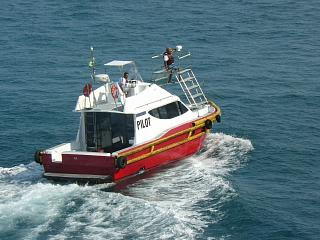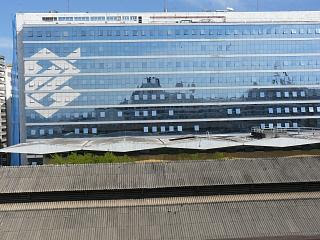
Salvador de Bahia (in English: "Holy Savior of All Saints' Bay") is a city on the north east coast of Brazil and the capital of the north eastern Brazilian state of Bahia. Salvador is also known as Brazil's capital of happiness due to its easygoing population and countless popular outdoor parties, including its street carnival.
The first colonial capital of Brazil, the city is one of the oldest in the country and in the New World. For a long time, it was also known as Bahia, and appears under that name on many maps and books from before the mid-20th century.
Salvador is the third most populous Brazilian city, after São Paulo and Rio de Janeiro and it is the ninth most populous city in Latin America, after Mexico City, São Paulo, Buenos Aires, Lima, Bogotá, Rio de Janeiro, Santiago and Caracas.
 The city of Salvador is notable in Brazil for its cuisine, music and architecture, and its metropolitan area is the wealthiest in Brazil's Northeast, its poorest region.
The city of Salvador is notable in Brazil for its cuisine, music and architecture, and its metropolitan area is the wealthiest in Brazil's Northeast, its poorest region.
Over 80% of the population of metropolitan region of Salvador has Black African ancestry. The African influence in many cultural aspects of the city makes it the centre of Afro-Brazilian culture and this reflects in turn a curious situation in which African-associated cultural practices are celebrated, but Black Bahians face major discrimination.
The historical centre of Salvador, frequently called the Pelourinho, is renowned for its Portuguese colonial architecture with historical monuments dating from the 17th through the 19th centuries and has been declared a World Heritage Site by UNESCO in 1985.
 It is located on a small, roughly triangular peninsula that separates Todos os Santos Bay from the open waters of the Atlantic Ocean. The bay, which gets its name from having been discovered on All Saints' Day forms a natural harbour.
It is located on a small, roughly triangular peninsula that separates Todos os Santos Bay from the open waters of the Atlantic Ocean. The bay, which gets its name from having been discovered on All Saints' Day forms a natural harbour.
Salvador is a major export port, lying at the heart of the Recôncavo Baiano, a rich agricultural and industrial region encompassing the northern portion of coastal Bahia. The local terrain is diverse ranging from flat to rolling to hills and low mountains.
 A particularly notable feature is the escarpment that divides Salvador into the Cidade Alta ("Upper Town" - rest of the city) and the Cidade Baixa ("Lower Town" - north west region of the city), the former some 275 feet above the latter, with the city's cathedral and most administrative buildings standing on the higher ground. An elevator (the first installed in Brazil), known as Elevador Lacerda, has connected the two sections since 1873, having since undergone several upgrades.
A particularly notable feature is the escarpment that divides Salvador into the Cidade Alta ("Upper Town" - rest of the city) and the Cidade Baixa ("Lower Town" - north west region of the city), the former some 275 feet above the latter, with the city's cathedral and most administrative buildings standing on the higher ground. An elevator (the first installed in Brazil), known as Elevador Lacerda, has connected the two sections since 1873, having since undergone several upgrades.
The Deputado Luís Eduardo Magalhães International Airport connects Salvador with Brazilian cities and also operates international flights, and the city is home to the Federal University of Bahia.

I was up on deck by 6 o’clock, coffee in hand, enjoying seeing the sun come up and reflect off the blue sea. Today was going to be very hot I could tell.
Our a/c had not worked all night and the cabin was far from cool when I left it with Maria still fast asleep. I didn’t put the cooling fan on in case of waking her.

As we slowed down we passed some interesting scenery on the mainland.
I have never seen so many church spires in my life.
From our distance of a few miles out they looked magnificent set against the early morning sky. 

It was said that the saints shown in the churches were usually coloured reflecting the fact that 80% of the local population were black or descendents of slaves.


Maria was very disappointed that our cabin was still so warm. We then utilized the portable fan to attempt to bring some cooler air into the cabin although there was a slight breeze from the balcony. I took the opportunity of again speaking to our Concierge ladies about the intolerable situation with the a/c and they said they would monitor it during the day and hopefully things would improve.
H. Stern, the International Jewelers, were running a shuttle bus from the ship up to the center of the City, to the old main square.
By 10.30 we were there exploring these fantastic religious monuments of bye gone days.
Our first visit was to the Church of St. Francis of Bahia.
This wonder-fully old building dated back to its origins of 1635. Attached to the actual church was a remarkable museum showing many interesting facets from earlier days.
One room was called the ‘Room of the Saints’ where the faithful could kneel and pray before one or any of the 20 to 30 displayed saints’ statues, all of which were neatly lined up around the whole room.

The churches and convents are magnificent in their gilded glory and are all decorated in the baroque style.

One of their tasks, in attracting attention, is to lure you into a particular shop they represent. Indeed we were lured by such antics and Maria made a small purchase of some jewelry as a result.
The beautifully turned out lady soon had me introduced to her strikingly good looking daughter who I was then pleased to pose with for photographic purposes.


It had been our original intention to go further a field out of town to the eatery recommended by our Brazilian lady officer who joined us for dinner the previous evening. However in view of the uncomfortable condition we were now experiencing we gave that one a miss.

It has a very ornate interior with renovation work in progress over and behind the main altar. Surprisingly the church itself seemed to have no natural ventilation and must have been very uncomfortable for the faithful on Sundays and other days of prayer.





Maria couldn’t resist the opportunity for a bargain, so made a few small purchases here.
We really were feeling the heat now and still had a half-mile or so to navigate before arriving at the cruise line port entrance.
On reaching the ship we were dismayed to find that our cabin was still too hot despite the portable fan going at full blast. The poor old ‘Prinsendam’ has, I’m afraid, seen better days. 
We are moored just opposite a building that has a glass front and the ship is nicely reflected on the face of this building as shown in this picture.
As promised by Nancy of the Concierge Department, help for the a/c did arrive. We hope that the system is now fixed and our room will accordingly cool down. Only time will tell.
This evening on deck there was a good BBQ going and although we ate well at lunch time we did manage a steak and sausage that had been cooked to perfection. Ice creams were also consumed as well as a few gallons of ice cold water.
Tomorrow is a sea day and maybe a little sun bathing will be the order of the day if the sea breeze is sufficient to cool us all down.

Thank you for keeping such a wonderfully detailed blog. My parents are on the voyage with you, and it's great to hear about their trip on a daily basis.
ReplyDelete